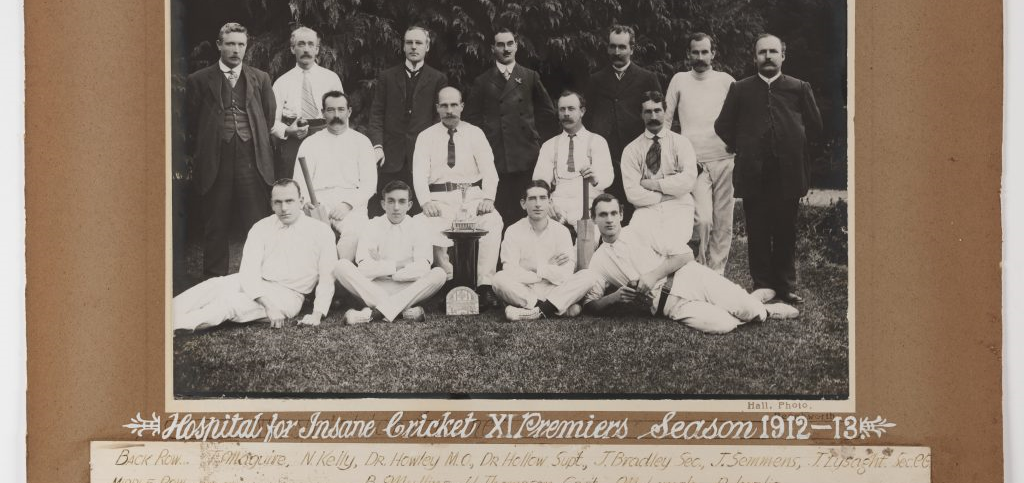When I began my research for my PhD back in 2009, I was primarily interested in my grandmother’s story. Ada was hidden from our family for nearly thirty-years when she was committed as insane in 1936. Her journey through several mental institutions in Victoria saw her transferred from Mont Park in Melbourne to Mayday Hills asylum in Beechworth in the late 1950s. Ada finally reconnected with our family when she was transferred back to Mont Park in the 1960s.
I had accessed Ada’s mental patients files to find that her original diagnosis was ‘puerperal insanity’ which is understood as form of postnatal depression. I accessed a further thirty mother’s files of women committed with various kinds of maternal insanity, commonly connected to recent childbirth, to Royal Melbourne Reception House, Victoria, between the years 1920 and 1936. I found that some of these other mothers had possibly a worse time during their institutionalisation, than Ada, although they are all sad stories.

The work examines the ways that nineteenth-century medical interest in women’s diseases remained highly influential on twentieth-century ideas of gender, mothers and mental illness. In particular, a diagnosis of puerperal insanity could be prompted by anyone of several symptoms including violent and harmful behaviour, hallucinations or mania. It usually occurred within the days or weeks following childbirth, and for some mothers the condition was known to cause death, suicide, and at its worst, infanticide, at a time usually associated with joy within the family.
It is set in the social context of the federated nation of the early twentieth century, where women continued to be caught in nineteenth-century gendered power relations in both the patriarchal nature of families, psychiatry and medicine. It provides distinctive aspects of puerperal insanity unique to the context of twentieth-century Australian women, as well as to medical and psychiatric contexts and conditions. This thesis argues that given the ‘othering’ of mothers in psychiatric and social discourses within the patriarchal society, a diagnosis of puerperal insanity and birth-related illness often overlooked the social problems of poverty, desertion, unwed motherhood and frequent childbirth that mothers experienced. In this way, maternal insanity could be understood as directly linked to cultural beliefs and gender norms concerning the home, family and the mother role.
Citation: Watts, A. 2015. Maternal Insanity in Victoria: 1920-1973 (PhD thesis, Southern Cross University, Lismore, Australia).
A PDF can be download from:
https://researchportal.scu.edu.au/esploro/outputs/doctoral/Maternal-insanity-in-Victoria-Australia/991012821132602368
Dr Alison Watts is an Adjunct Lecturer, Faculty of Health, Southern Cross University, Lismore, NSW
See Alison’s full bio here


